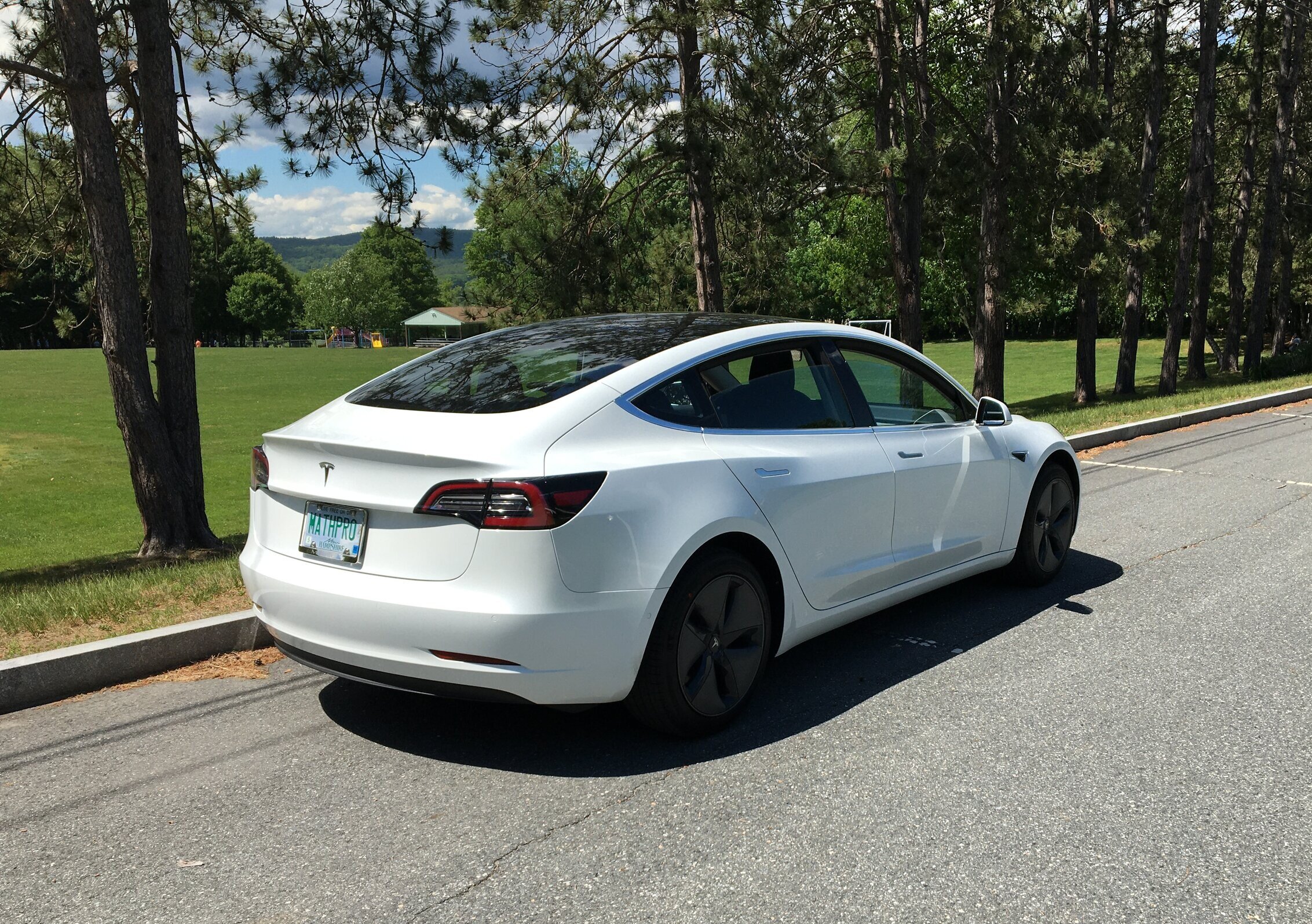
What Are EVs?
EVs
Electric vehicles (EVs) are potentially more environmentally friendly than the internal combustion engine vehicles that most of us now drive. As the name suggests, EVs are powered by electricity rather than fossil fuels.
Renewable sources of electricity such as wind and solar are increasingly powering our electrical grid. Driving an EV powered by renewable electricity decreases our reliance on fossil fuels, reduces the amount of greenhouse gases we pour into the atmosphere and mitigates the effects of climate change.
There are two major types of EVs: plug-in hybrids (PHEV) and all-electrics.
Plug-In Hybrids
Plug-in hybrids (PHEVs) have both a small battery and a gas-powered engine that kicks in when the battery is exhausted. They can go from 10 to 125 miles on the battery, depending on the model.
Many folks select a model so that the battery covers their routine commute or errands, then depend on the gas-powered engine for longer trips. This eliminates any anxiety over being stuck somewhere without a charging station.
Because of its gas-powered engine, PHEVs emit more emissions and require more maintenance than all-electric but less than internal combustion vehicles.
All-Electric
All-electric vehicles have a battery and usually two electric motors. Power comes from the battery only. Most batteries will power the car for more than 250 miles, fewer in cold temperatures, before needing to be charged.
All-electric vehicles produce no emissions and require very little maintenance -- no transmission or oil changes and fewer moving parts.
Owners need to find a charging station on trips longer than the range of their car, but many such charging stations are currently available and more are on the way.
Why Own An EV?
Will Fit Your Needs
There are many models of EVs to fit your needs -- SUV’s, all wheel drive, minivans, crossovers, hatchbacks, and pickup trucks. They are fun to drive -- quiet with great acceleration. For inspiration, watch these testimonials.
Affordable
The price of a new EV ranges from $27k to over $80k. A federal tax credit of $7.5k is available for many models.
The costs of running an EV are usually less than half as expensive as that of an internal combustion engine (ICE). An exact comparison depends on one’s cost of electricity, the going rate for gasoline, and mileage for a comparable vehicle with an ICE.
All-electric vehicles require less maintenance.
Easy to Charge
Chevy Bolt Charging at Home
At Home
EV owners do most of their charging at home, plugging in at the end of the day to be sufficiently charged by morning.
Sixty-five percent of EV owners in the Upper Valley who participated in a recent survey charge with a regular 120 volt outlet or Level 1 charger that provides about 5 miles of power per hour of charging.
Others use a 240 volt or Level 2 charger that charges more quickly -- about 15-25 miles of power per hour. A Level 2 charger costs from $500 to $1,000 and should be installed by an electrician.
Tesla Superchargers
At Work
Being able to charge at work is critical for many EV owners. Some are unable to charge at home, or the range of their battery does cover commuting in both directions.
From the perspective of business owners, installing chargers may help meet sustainability goals as well as recruit and retain employees. Here is some basic information for employers:
All EV’s come with a charger that can plug into a regular 120 volt outlet. This Level 1 charging provides about 5 miles per hour and, during an 8 hour workday, will fuel the ride home for most employees.
Level 2 chargers are much faster and cost about $500-$1000 plus installation.
With an internet connection, a smart Level 2 charger costs much more and has an annual fee, but it allows the employer to manage the power supplied. This can help spread the available power over more chargers, charge the user for the electricity, and manage how long users charge.
The U.S. Department of Energy has launched EMPOWER (Equitable Mobility Powering Opportunities for Workplace Electrification Readiness) to walk employers through the process of adding EV charging. Run by the Clean Cities Coalitions of each state, EMPOWER helps business owners access the right people at utilities, EV charging vendors, financial incentives and rebates, and more.
Kona Fast Charging
On the Road
Some employers, businesses, hotels, and recreational areas have either 120 volt outlets or Level 2 chargers for public use. As of 2023, NH has more than 400 public Level 2 chargers. This number is rapidly growing.
All-electric vehicles can use DC fast or Level 3 chargers that provide an 80% charge in 30 to 60 minutes. As of 2023, there are 20 Level 3 chargers in NH and more coming.
For Tesla owners, there are even faster superchargers located along all major interstates as shown on the car’s navigation screen.
One can locate Level 2 and Level 3 chargers on specialized maps such as through Plug Share. There are also online apps that help you plan a trip, comparing how well different EV models work. You can find more details on types and locations of charging stations here.
Help is Available
Selecting An EV can be overwhelming. There are at least 100 models now available and more coming. Both Drive Electric NH and Drive Electric VT have tools to help you compare and select the EV that best suits your needs. In addition, Sustainable Hanover has a network of EV owners in the Upper Valley willing to share their experiences in selecting and owning an EV and helping you select yours.
By owning an EV, you will be joining an ever increasing number of converts, encouraging others to do the same, and actively participating in Hanover’s 100% renewable energy campaign.
Ready? Here's What to Do.
Connect with SH - EVs
If you think you might want to purchase an EV, let us know. We will be happy to help in any way we can -- answer questions, provide information, and put you in contact with neighbors who already own an EV or experts who know more.

Did it? Celebrate!
Congratulations on buying an EV!
You have now joined many others who have taken similar steps, are actively participating in Hanover’s 100% renewable energy campaign, and will inspire others to do the same.
Here are some suggestions for next steps:










